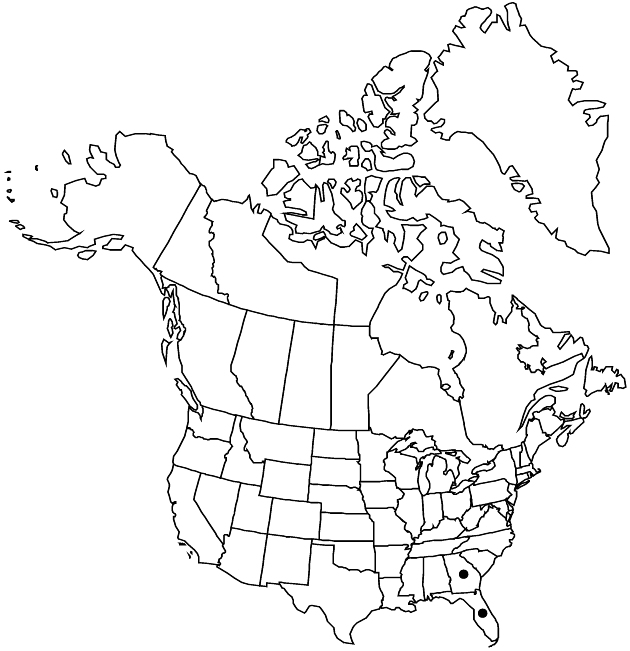Difference between revisions of "Ageratina jucunda"
Brittonia 23: 142. 1971.
Common names: Hammock snakeroot
Endemic
Basionym: Eupatorium jucundum Greene Pittonia 3: 180. 1897,
FNA>Volume Importer |
imported>Volume Importer |
||
| (One intermediate revision by the same user not shown) | |||
| Line 8: | Line 8: | ||
}} | }} | ||
|common_names=Hammock snakeroot | |common_names=Hammock snakeroot | ||
| + | |special_status={{Treatment/ID/Special_status | ||
| + | |code=E | ||
| + | |label=Endemic | ||
| + | }} | ||
|basionyms={{Treatment/ID/Basionym | |basionyms={{Treatment/ID/Basionym | ||
|name=Eupatorium jucundum | |name=Eupatorium jucundum | ||
| Line 51: | Line 55: | ||
|publication title=Brittonia | |publication title=Brittonia | ||
|publication year=1971 | |publication year=1971 | ||
| − | |special status= | + | |special status=Endemic |
| − | |source xml=https:// | + | |source xml=https://bitbucket.org/aafc-mbb/fna-data-curation/src/2e0870ddd59836b60bcf96646a41e87ea5a5943a/coarse_grained_fna_xml/V19-20-21/V21_1396.xml |
|tribe=Asteraceae tribe Eupatorieae | |tribe=Asteraceae tribe Eupatorieae | ||
|genus=Ageratina | |genus=Ageratina | ||
Latest revision as of 20:10, 5 November 2020
Perennials, 40–80(–100) cm. Stems erect, lax, minutely pilose. Leaves opposite; petioles 7–15(–22) mm; blades narrowly deltate to rhombic, 2–6(–7) × 1.5–4 cm, (usually subcoriaceous) bases usually cuneate, sometimes truncate to slightly subcordate, margins usually coarsely serrate or incised, sometimes crenate to subentire, apices acute to acuminate, abaxial faces glabrous or hairy on veins. Heads clustered. Peduncles 2–10 mm, sparsely puberulent. Involucres 2.5–4 mm. Phyllaries: apices acute, abaxial faces puberulent to villous-puberulent. Corollas white, lobes glabrous or sparsely short-hirtellous. Cypselae usually finely hirtellous-strigose on distal 1/3, sometimes glabrous. 2n = 34.
Phenology: Flowering (Sep–)Oct–Dec(–Jan).
Habitat: Sand pine scrub, longleaf pine-turkey oak sand ridges, pine-palmetto, live-oak woods, hammocks, dunes, roadsides, old fields, stream banks, dry flatwoods
Elevation: 0–50 m
Discussion
Selected References
None.
Lower Taxa
None.
